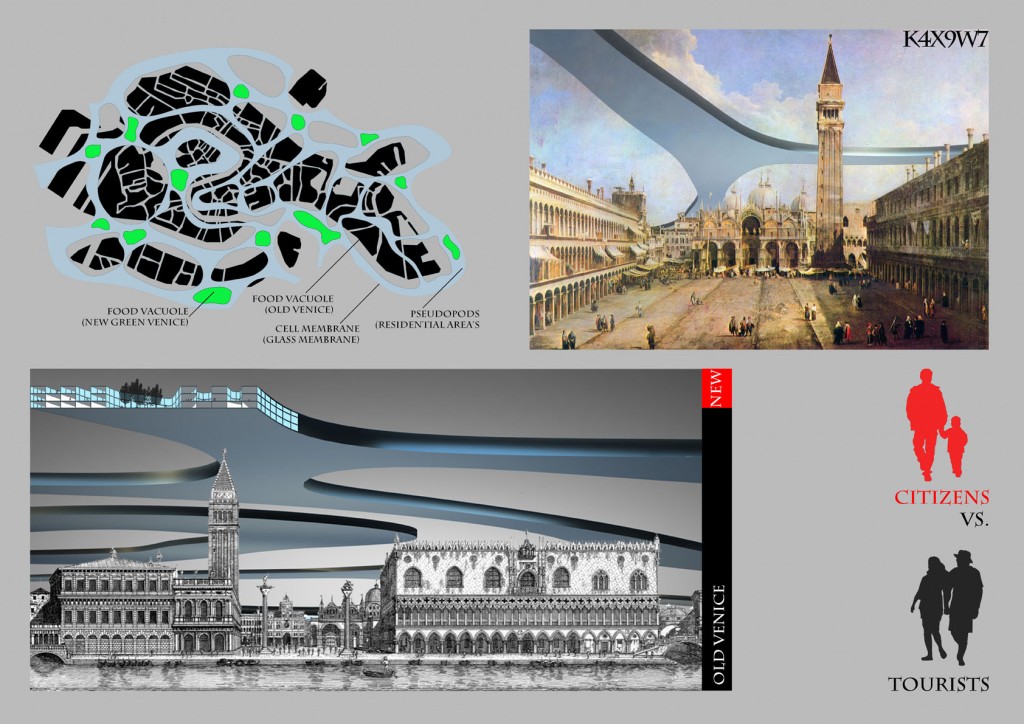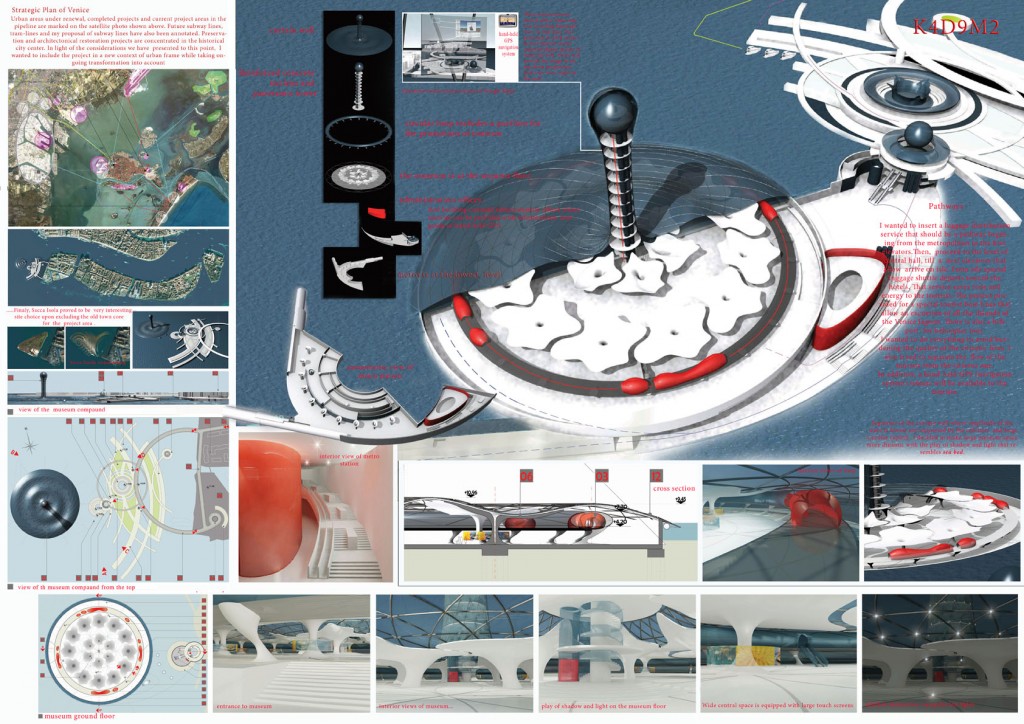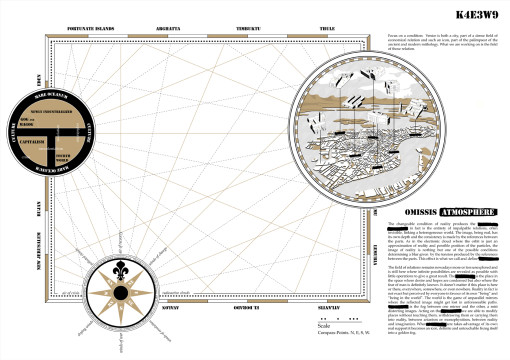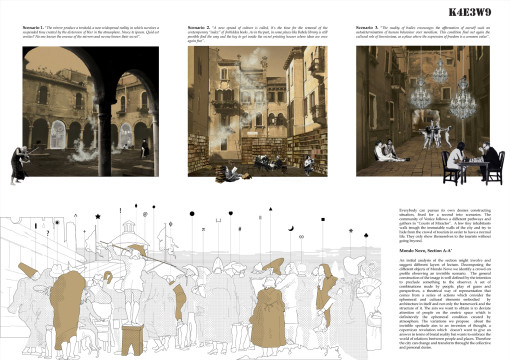Info:
Title: Nemesis - Code: K4E3W9Contest: Venice / 2011
By: M. Andolina / G. Ardesio / A. C. Leardini
Views: 2632 Likes: 3
Votes:
BJARKE INGELS6 NERI OXMAN5 ELENA MANFERDINI7 MARIA LUDOVICA TRAMONTIN4 BOSTJAN VUGA75.8
Nemesis
Nemesis: the city of Venice is nowadays one of the global capitals of culture, a reference worldwide given by the role it played as a gate between east and west. The significance that the city had in different centuries has greatly changed throughout history: starting as a market and trade center, Venice built itself metaphorically and literally with the stones stolen from Aquileia, Rome, Alexandria, Acri, Costantinople. This long process marked a unique identity made by the relations between those pieces, those stories, that turned an insular village into the most prosperous trade center in the Mediterranean and then into one of the most fascinating cities in the world. As the ancient Venetian merchants today millions of tourists visit the city remaining enchanted by the stones of Venice with the secret wish of bringing home just a small piece of them. The plastic gondolas populating the domestic landscape of the houses worldwide are the contemporary transposition of the golden horses on San Marco’s facade stolen from the circus of Constantinople to symbolically achieve the greatness of the emperors. Venice is now undergoing the same process that for centuries has shaped its own image.
Iconicity: Venice, as we know it, is nothing but an image. The strong relation between a particular morphology of the territory and a deeply stratified identity turned the city into a metaphor of the ephemeral. This character is revealed in the threshold condition between iconic landscape and real city as today is happening in Dubai, Beejing or Astana. Visiting Venice means observing through a kaleidoscope made by personal and collective memory that inevitably distorts reality. Furthermore the recent evolution of the city has configured it more and more as a place made to be looked at as a wunderkammer where everything is shown in an obvious nudity. What is ceiled is the real structure, the support of the image that let it exist and only after being observed.
Omissis Venice: in a phenomenal city, as is generally said, the structure is inevitably hidden: that that makes Venice a city is in fact aside from its own image, sense of urbanity and everyday life. It doesn’t matter when and how, the importance s that it seems used even in a different time than today. This way the life of inhabitants occurs on a different plane leading to a detachment between urbanity and phenomenon. There is therefore the suspension of the city in favour of the image in a continuous regressive process from the first to the second. In this interposed space, coming from the separation between different plans, a solid void is generated like a lacuna.
A pragmatic vision: all changes and evolutions on the structure of the city go to the progressive crystallization coming from the progressive retreat of the city to the image. The policy of bond on buildings and the property market producing the increase of house prices lead to a constant depopulation in the urban tissue. In fact, the necessity is finding an answer to the requests of the tourists asking to find in Venice not a city but the result of the stratification of memories. In essence, those expectations are based on the survival of a city living almost exclusively by tourism. Every possible change has to concern about it.
A dystopic scenario: in a place where living is made impossible by the modification of the human habitat that nowadays needs comforts that the lagoon is unable to give, the only reason for the survival of the island is tourism: living for one day, one breath elsewhere in time and space. Depopulation will lead to a reduction of the urban community and to its progressive ghettification in the few areas untouched by tourism. A court of miracles, an alternative and dual city in which inhabitants can live an ordinary life. An itinerant and hidden town in which the contact points are reduced to chinks and passages.
Copernican revolution: in a city in which every building, street and memory is fixed in a precise state, the only freedom degree is its immaterial component. The city is made by relations where are collected present and past, culture and desire thought as the projection into the future of another possible reality. Working on the immaterial component means acting with the solid void of lacunae or rather acting on the thickness of the image. The atmosphere is what gently fills those empty spaces, an immaterial substance signifying these places.
Simple solution: the final goal is condensing this thick tissue of relation drawing them into the dimension of perceptible, giving them back to the inhabitants in the form of real life. A collection of situations are able to restore to the degree of reality the interrupted tales of a city deprived of its own spaces. A changeable support of new relations are able to preserve definitively a new kind of freedom. Arranging new gates, unknown paths, secret gardens: islands in which its still possible to live, delightful and aging, where a serene passing of time can still exist.
Info:
Title: Nemesis
Time: 6 giugno 2011
Category: Venice
Views: 2632 Likes: 3
Tags: A. C. Leardini , Acri , Aquileia , Constantinople , Dubai , G. Ardesio , M. Andolina , Mediterranean , Rome , Scripps Institution of Oceanography , Venice








